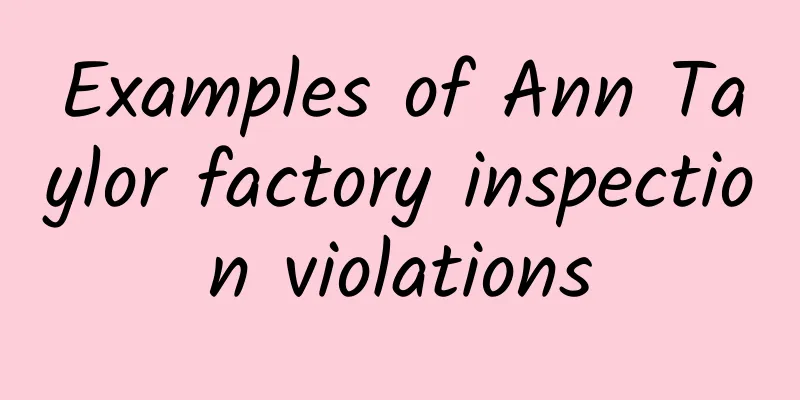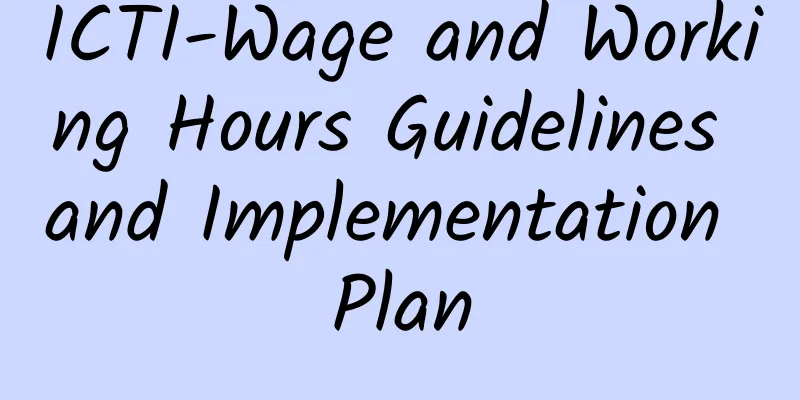|
Key requirements for GMP factory inspection 1. Wages and Working Hours 1. Keep written instructions on how wages are calculated.
2. The salary payment date shall not be later than 25 days after the last salary payment.
3. List the deduction items in the payroll. The deduction items must be approved by the Labor Bureau and the Trade Union. The security deposit cannot be withheld. The fine cannot exceed 20% of the local statutory minimum wage. Provide a payroll to each employee.
4. Overtime work must be approved by the local labor bureau, and overtime pay is calculated according to the labor law. Workers' overtime work is voluntary, and workers have the right to notify their supervisors in writing not to work overtime.
5. Benefits: statutory leave, New Year leave, work-related sick leave, marriage leave, bereavement leave, maternity leave, social insurance, etc.
6. Sign the labor contract, have it signed by the Labor Bureau, and give a copy to each employee.
7. During an 8-hour shift, there is at least 30 minutes of meal time, and workers must clock in.
8. Record the temperature every day and have corresponding emergency measures for low or high temperature.
9. There is an employee handbook to help employees understand the factory conditions when they enter the factory. 2. Age requirements 1. Child labor (under 16 years old) is not allowed.
2. When hiring underage workers aged 16-18, they must undergo a physical examination once a year and keep the physical examination data, and have a written document approved by the Labor Bureau to hire underage workers.
3. Have a recruitment system 4. Check ID cards regularly.
3. Forced Labor 1. There is a system of fine details and amounts.
2. There is a complaint procedure.
3. No curfew, no body search.
Four types of discrimination: 1. There is a system of promotion or dismissal.
5. Freedom of Association 1. Employees have the right to voluntarily join or not join trade unions and other organizations.
Part A of Appendix VI: Living Conditions 1 Dormitories built before March 2000 can accommodate 24 people per room. Dormitories built after March 2000 can accommodate no more than 12 people per room.
2 Each employee must occupy at least 2 square meters (20 square feet) in the room.
3. The width of the public corridor shall not be less than 1 meter.
4Each dormitory has two exits (two staircases) and an emergency evacuation map.
5. Each person shall have a small locker of no less than 0.12 cubic meters (4 cubic feet) to store personal belongings.
6. Ensure air circulation.
7. Establish a cleaning system to ensure dormitory cleanliness.
8. Do not use paper or adhesive tape to separate beds.
9. No private wiring, smoking or cooking is allowed in the dormitory.
10 Dormitories built in March 2000 can accommodate 20 people per bathroom, and dormitories built after March 2000 can accommodate 15 people per bathroom. It is planned that there will be hot water devices in the shower area by December 2002, and hot water will be available regularly.
11 The number of wash basins or faucets must not be less than one-third of the total number of toilet cubicles and urinals.
Part VII. B: Canteen 1 employees are free to purchase meal tickets.
2Kitchen staff have health certificates.
3. The trash can has a lid.
4. Kitchen staff are neatly dressed.
5. Raw and cooked food should be placed separately and covered.
6. Do not place cooked food on the floor.
7. There is a rack on the ground for washing clean food.
8. Workplace Safety 1. With more than 1,000 employees, there are at least 2 full-time environmental protection, health and safety staff.
2The person in charge of environmental protection, health and safety must undergo 120 hours of training and pass the examination.
3. All employees entering the factory must receive basic knowledge training on environmental protection, hygiene and safety.
4. Training on dangerous processes and material handling for special types of workers.
5. All work-related injuries must be recorded.
6. Establish an environmental protection, health and safety committee, hold a meeting every 60 days and keep records.
7 Conduct risk assessment: A. Places where personal protective equipment is required are marked. B. Records of providing personal protective equipment are kept. C. Train employees who use personal protective equipment. D. Conduct medical assessments and appropriate tests for employees who use personal protective equipment.
8All containers must be labeled.
9. There are "Material Safety Data Sheets" for chemicals.
10. Eyewash equipment is available, check and record.
11 Clean the oil injection tank and record. 12 Measure the wind speed at the oil injection tank and record it at least once a year. The speed should not be less than 100 feet.
13. Moving parts less than 2 meters high on the working plane must have guards.
14 All passages are marked and at least 1 meter wide.
15. Qualified electricians must receive low voltage training.
16. Add warning labels to the switchboards, and specify that the area within 36 inches is a restricted area, and the passages cannot be blocked. A regular inspection plan for electrical appliances should also be established.
17 When repairing electrical appliances, the switch box should be locked and marked.
18 Compressed gas cylinders should be marked and fixed, oxygen and fuel cylinders should be stored separately, and the gas valves should be closed when not in use.
19. Two persons are required to enter sealed areas (such as storage bins, water collection tanks, air cylinders, oil storage tanks, etc.).
20There are enough emergency lights.
21 Signature letter for outsourced projects’ environmental protection and hygiene.
Nine health 1 more than 1000 people must have a full-time nurse, each workroom must have a first aid kit, trained first aid personnel, and medical treatment can be provided within 15 minutes by car.
2. Have a preventive maintenance plan for the lighting system.
3. Air testing.
4. Noise detection and recording. Areas with noise levels above 85 decibels are marked with personal protective equipment and tested at least once a year.
5. Records of dry and wet temperature tables.
6. There is one toilet cubicle for every 35 employees in the factory. There is an independent flushing system, each cubicle has a door, good air circulation, and a wash basin in the toilet.
Ten emergency plans 1 include fire prevention plans, fire extinguisher lists, locations, deadlines, and categories.
2. Place a fire extinguisher every 15 meters in the painting department and pad printing department, and place a fire extinguisher every 20 meters in other departments. The height of the fire extinguisher shall not exceed 1.4 meters and shall be checked and inspected once a month.
3. Test the fire pump every week and check the fire hose at least once a year.
4 If there is a fire brigade, the members must be trained and recorded every year.
5. There is a fire alarm.
6. Conduct fire drills for each shift every 6 months, leaving the building within 10 minutes at most, and record the location, time, participants and results of each fire drill.
7. There are no less than 2 emergency exits on each floor of the factory. All exits have emergency exit lights. All smoke-proof doors are pushed outwards and cannot be locked during working hours.
8 Emergency evacuation maps should be posted at all exits, and emergency telephone numbers should be posted in production and living areas.
9. Establish a permit system for "open flame operations" (such as welding, etc.), maintain a 35-meter space around open flame operations, and equip fire extinguishers.
11. Environmental Protection 1. All dangerous goods must have a secondary protective container.
2. Employees who handle hazardous materials must receive training once a year.
3. Inspect hazardous waste storage areas weekly.
4. The receiving unit of hazardous waste should be a licensed enterprise, and all five copies of waste transport forms must be kept permanently.
5. Medical waste should be handed over to licensed companies.
6. Clean the septic tank regularly and keep records.
7. Test drinking water every 6 months.
8 Exhaust emission testing.
9 Underground storage tanks should have a second container and be fully tested annually. Aboveground storage tanks should have a second container and be checked once a week and recorded.
10Asbestos testing. |










